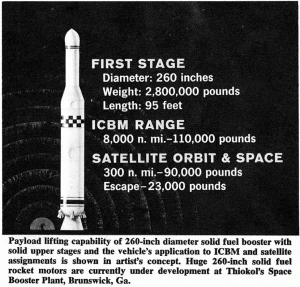[youtube ZY0apW2ow6g]
A lot of interestingness here. Early on are some artists concepts of “weapons of the future” including a true “hover tank.” It looks vaguely realistic, as such things go… the bulk of the vehicle is consumed by the lift system, and the weapons load is pathetically small for the overall size of the vehicle.
The video as a whole discusses the U.S. Army Combat Development Experimentation Center, which ran simulations to determine the proper uses of and tactics for “weapons of the future.” What makes this interesting is that the “simulation” is not some computer analysis, but actual field “battles” between Friendlies and Aggressors, using actual hardware. But since the Army didn’t want their soldiers blowing each other to flinders, the simulated weapons were often… interesting. Compare the technologies used then to those used today.
And given the date (a bit vague… early 1960’s it seems), it is suprisingly racially diverse. it’s liek a black and white Bennetton ad with weaponry. Apparently this video was intended to be broadcast on TV.




